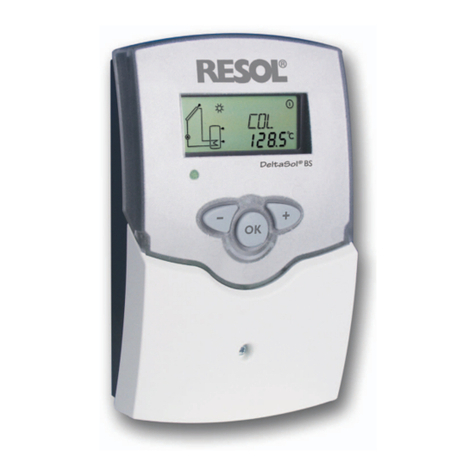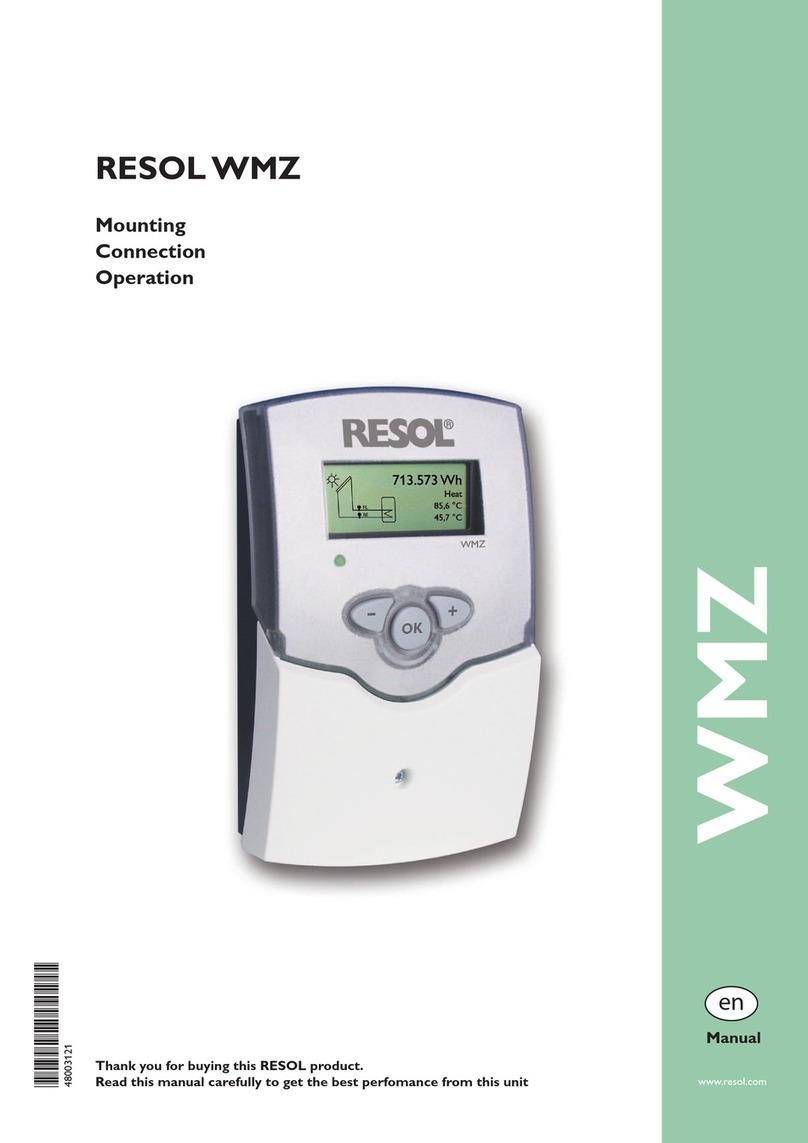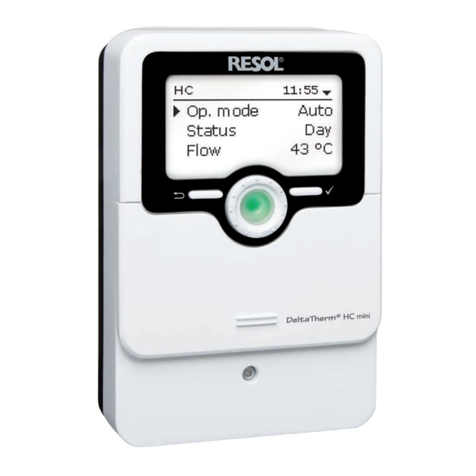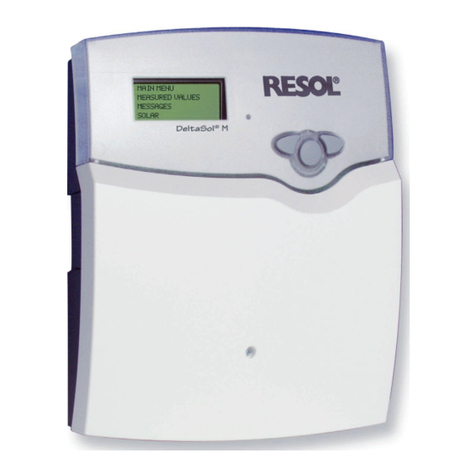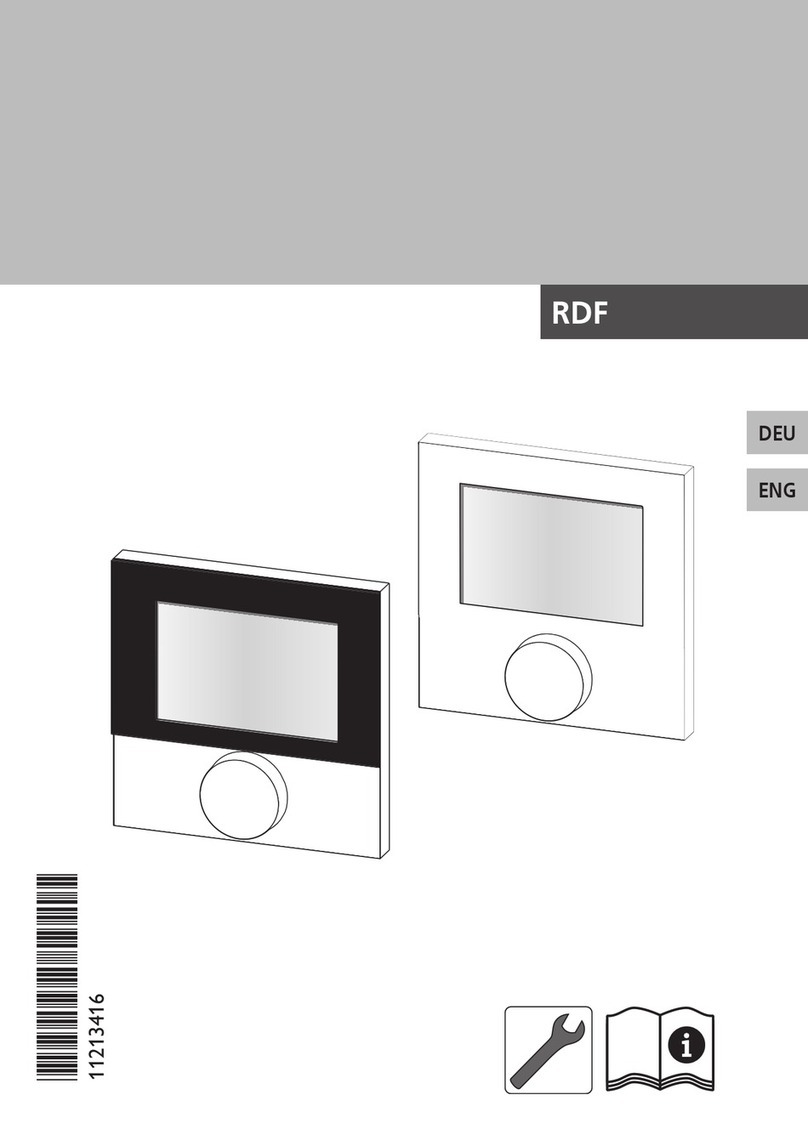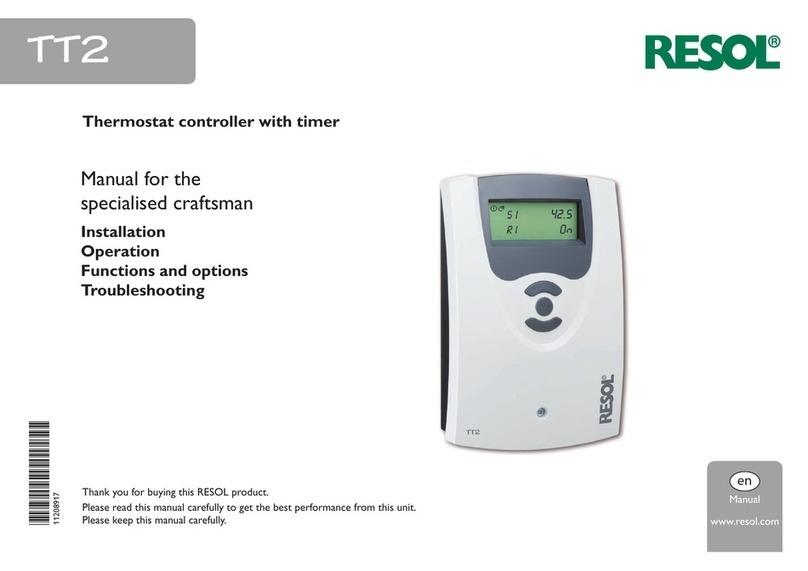
3
en
DeltaTherm®PHM
The DeltaTherm®PHM is the ideal solution for using excess PV current for the
control of different loads. Heat pumps, electric immersion heaters, and charging
stations for electric vehicles can be controlled as needed. All the while household
power has absolute priority.
Each load can also be supplied with mains current on a time-controlled basis.
Furthermore, the DeltaTherm®PHM measures the electric loads at the energy
meter which can be visualised via VBus.net.
Included with the DeltaTherm®PHM
Controller (DeltaTherm® PHM)
Sensor module (DeltaTherm® E sensor) and current sensors
Contents
1 Overview............................................................................................4
2 System overview...............................................................................5
3 Installation.........................................................................................6
3.1 Mounting ....................................................................................................................6
Bus
3.2 Electrical connection...............................................................................................8
3.2.1 Loads with high power consumption..................................................................9
3.2.2 Loads with control input......................................................................................10
3.2.3 Loads with key switch...........................................................................................10
3.3 Data communication / Bus ....................................................................................11
3.4 Sensor module........................................................................................................11
3.5 MicroSD slot of the controller ...........................................................................13
4 Operation and function of the controller.....................................13
4.1 Buttons and adjustment dial ................................................................................13
4.2 Microbuttons for the parameterisation mode ................................................13
4.3 Control lamp...........................................................................................................14
4.4 Parameterisation mode ........................................................................................14
4.5 Selecting menu points and adjusting values......................................................15
4.6 Adjusting the timer ...............................................................................................16
4.7 Menu structure.......................................................................................................18
5 Commissioning ...............................................................................19
6 Main menu.......................................................................................20
7 Status ...............................................................................................21
7.1 Controller................................................................................................................21
7.2 Loads.........................................................................................................................21
7.3 Measured / Balance values.....................................................................................22
7.4 Messages ..................................................................................................................22
8 Loads................................................................................................23
8.1 Electric immersion heater....................................................................................24
8.2 Heat pump...............................................................................................................25
8.3 Wallbox ....................................................................................................................26
9 Basic settings...................................................................................27
10 MicroSD card ..................................................................................27
11 User code.........................................................................................28
12 Inputs ...............................................................................................29
13 Troubleshooting ..............................................................................30
14 Accessories......................................................................................31
15 Index.................................................................................................32












